TANZANIA
TANZANIA
The gem in East Africa's crown
Grab your binocular and khakis and head out into the heart of Africa's Great Plains... A land of unforgettable adventures featuring vast, dramatic landscapes filled with life in abundance. This is Tanzania, renowned as one of Africa's top safari destinations and home to iconic national parks, untamed wilderness areas and vibrant cultures, as well as the natural wonder that is the Great Wildebeest Migration.
This marvellous mass mammal migration is a feast for the senses as millions of wildebeest and zebra move through the endless plains, of the Serengeti, following the rains and the fresh grazing that comes in their wake. It's a cyclical journey that mirrors the circle of life, attracting visitors from all over the world to this UNESCO World Heritage Site that's home to some of the highest concentrations of wildlife on the continent.
Beyond the endless savannah lies Africa's highest peak - Mount Kilimanjaro - which is also the world's largest freestanding mountain, and the Ngorongoro Crater - the largest intact volcanic caldera on the planet. This is a region that's renowned as being the cradle of humankind, where some of the oldest fossils of man's earliest ancestors have been uncovered in Olduvai Gorge.
Tanzania's tapestry of cultures is as rich and colourful as its natural environment, with a blend of local Maasai, Arabic, European and Indian influences creating a truly kaleidoscopic cultural extravaganza in urban centres like Arusha, Dar es Salaam and historic Stonetown on the tropical island of Zanzibar, just off Tanzania's stunning eastern coastline.
If it sounds amazing, that's because it is! Want to go? Cool beans! Then let's get the ball rolling!
The gem in East Africa's crown
Grab your binocular and khakis and head out into the heart of Africa's Great Plains... A land of unforgettable adventures featuring vast, dramatic landscapes filled with life in abundance. This is Tanzania, renowned as one of Africa's top safari destinations and home to iconic national parks, untamed wilderness areas and vibrant cultures, as well as the natural wonder that is the Great Wildebeest Migration.
This marvellous mass mammal migration is a feast for the senses as millions of wildebeest and zebra move through the endless plains, of the Serengeti, following the rains and the fresh grazing that comes in their wake. It's a cyclical journey that mirrors the circle of life, attracting visitors from all over the world to this UNESCO World Heritage Site that's home to some of the highest concentrations of wildlife on the continent.
Beyond the endless savannah lies Africa's highest peak - Mount Kilimanjaro - which is also the world's largest freestanding mountain, and the Ngorongoro Crater - the largest intact volcanic caldera on the planet. This is a region that's renowned as being the cradle of humankind, where some of the oldest fossils of man's earliest ancestors have been uncovered in Olduvai Gorge.
Tanzania's tapestry of cultures is as rich and colourful as its natural environment, with a blend of local Maasai, Arabic, European and Indian influences creating a truly kaleidoscopic cultural extravaganza in urban centres like Arusha, Dar es Salaam and historic Stonetown on the tropical island of Zanzibar, just off Tanzania's stunning eastern coastline.
If it sounds amazing, that's because it is! Want to go? Cool beans! Then let's get the ball rolling!
TANZANIA IN A NUTSHELL
The where...
Here are some of the must-visit places we recommend including on a Tanzania safari that can easily be combined with one another as well as a range of other complementary destinations...
TANZANIA IN A NUTSHELL
The where...
Here are some of the must-visit places we recommend including on a Tanzania safari that can easily be combined with one another as well as a range of other complementary destinations...
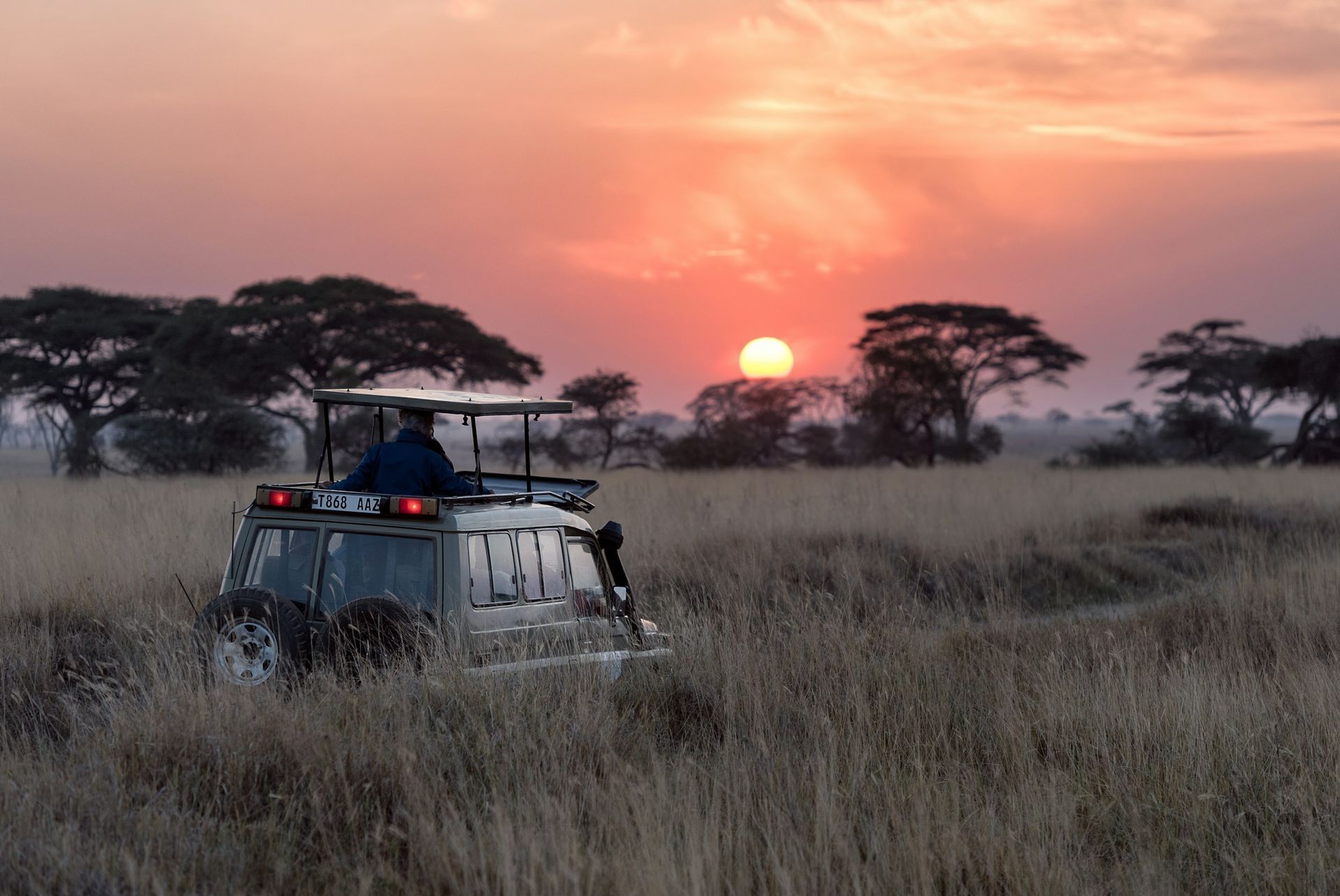
The Serengeti National Park
The Serengeti is a safari stunner! Nevermind the earth-shuddering experience of some 2-million wildebeest and zebra thundering across the plains and over the Grumeti and Mara rivers, this apex Tanzanian park is a year-round wildlife extravaganza. Home to the fabled "Big Five" – lion, elephant, leopard, rhino, and buffalo – as well as a sizzling "B list" of supporting stars like cheetah, painted wolves (African wild dog) and hyena, there's also more than 470 bird species to spot! Add in endless plains, golden savannahs, dramatic rocky outcrops and kopjes and you have the makings of an unforgettable safari adventure...
Musts: Walking safaris, game drives, hot-air balloon flights, horseriding across the plains, sundowners on a kopje, bush dinners under a billion stars
The Serengeti National Park
The Serengeti is a safari stunner! Nevermind the earth-shuddering experience of some 2-million wildebeest and zebra thundering across the plains and over the Grumeti and Mara rivers, this apex Tanzanian park is a year-round wildlife extravaganza. Home to the fabled "Big Five" – lion, elephant, leopard, rhino, and buffalo – as well as a sizzling "B list" of supporting stars like cheetah, painted wolves (African wild dog) and hyena, there's also more than 470 bird species to spot! Add in endless plains, golden savannahs, dramatic rocky outcrops and kopjes and you have the makings of an unforgettable safari adventure...
Musts: Walking safaris, game drives, hot-air balloon flights, horseriding across the plains, sundowners on a kopje, bush dinners under a billion stars
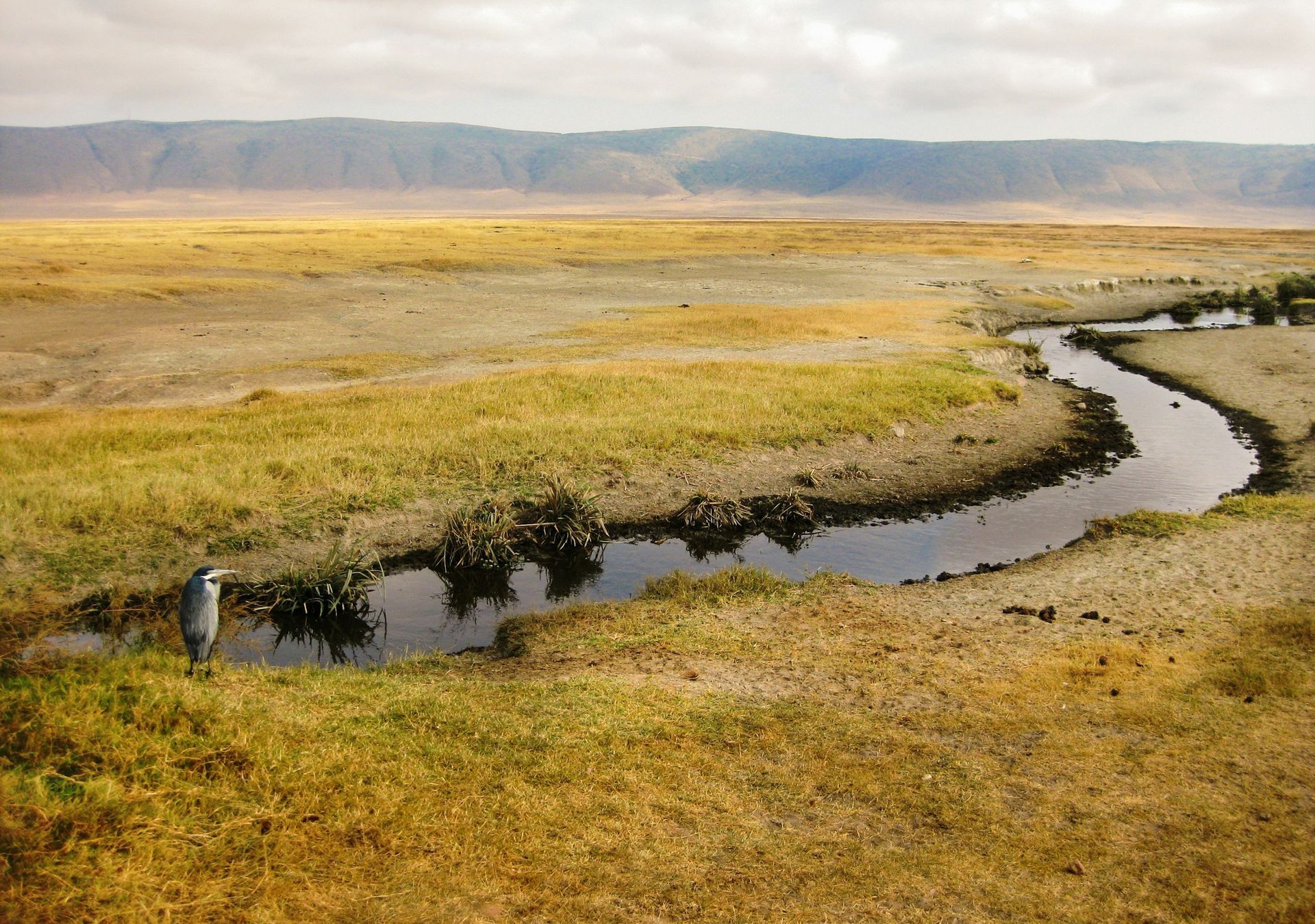
Ngorongoro Crater
Get ready to explore nature's coliseum! This UNESCO World Heritage Site isn't your average safari destination. It's theworld's largest intact inactive volcanic caldera and offers a wildlife spectacle unlike any other. Imagine a giant bowl teeming with life with a soda lake at its centre filled with pink flamingoes... This unique ecosystem offers year-round wildlife viewing, making it a dream for photographers. Beyond the animals, soak in the breathtaking scenery – the crater walls rise majestically, creating a stunning biological amphitheatre. Let the safari games begin!
Musts: Sundowners on the edge of the crater, game drives on the crater floor, exploring the montane forests along the caldera walls, witnessing a tablecloth of clouds descending the crater walls
Ngorongoro Crater
Get ready to explore nature's coliseum! This UNESCO World Heritage Site isn't your average safari destination. It's theworld's largest intact inactive volcanic caldera and offers a wildlife spectacle unlike any other. Imagine a giant bowl teeming with life with a soda lake at its centre filled with pink flamingoes... This unique ecosystem offers year-round wildlife viewing, making it a dream for photographers. Beyond the animals, soak in the breathtaking scenery – the crater walls rise majestically, creating a stunning biological amphitheatre. Let the safari games begin!
Musts: Sundowners on the edge of the crater, game drives on the crater floor, exploring the montane forests along the caldera walls, witnessing a tablecloth of clouds descending the crater walls
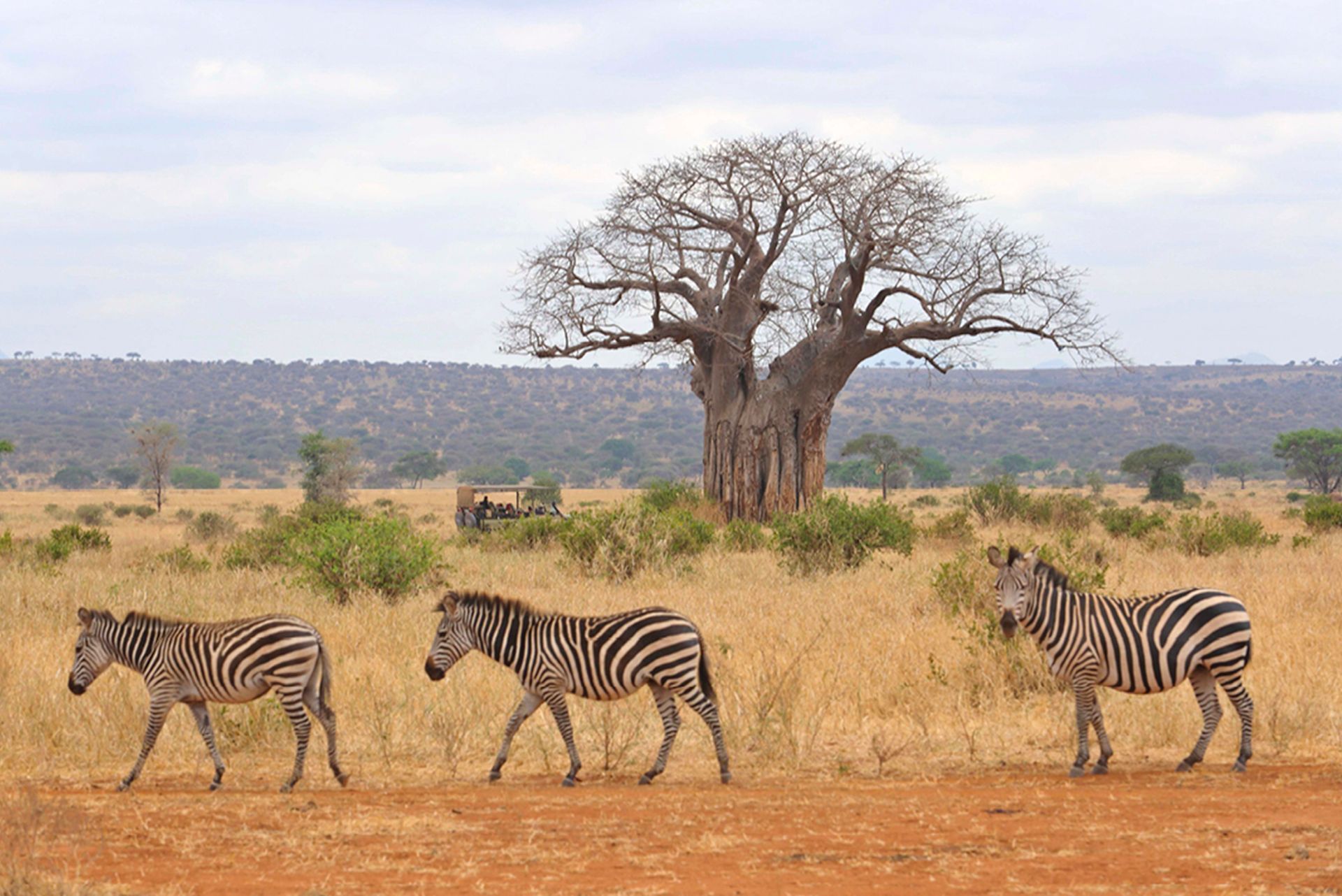
Tarangire National Park
Famous for its colossal elephant herds – the largest concentration in northern Tanzania - and its towering baobabs, this is a land of giants. Vast dusty plains are dotted with the odd-looking baobabs - their corpulent trunks and convoluted branches making look like they've been uprooted and stuck back in the ground upside down. And there are elephants literally everywhere. But Tarangire has other secrets... Keep your eyes peeled for graceful giraffes, huge herds of zebras, and cheetahs stalking prey. Over 550 bird species call Tarangire home, making it a haven for birdwatchers. This park offers year-round wildlife viewing with a unique twist, perfect for those seeking an off-the-beaten-path safari adventure.
Musts: Walking safaris, sundowners under the branches of a baobab, birding, wildlife photography, game drives
Tarangire National Park
Famous for its colossal elephant herds – the largest concentration in northern Tanzania - and its towering baobabs, this is a land of giants. Vast dusty plains are dotted with the odd-looking baobabs - their corpulent trunks and convoluted branches making look like they've been uprooted and stuck back in the ground upside down. And there are elephants literally everywhere. But Tarangire has other secrets... Keep your eyes peeled for graceful giraffes, huge herds of zebras, and cheetahs stalking prey. Over 550 bird species call Tarangire home, making it a haven for birdwatchers. This park offers year-round wildlife viewing with a unique twist, perfect for those seeking an off-the-beaten-path safari adventure.
Musts: Walking safaris, sundowners under the branches of a baobab, birding, wildlife photography, game drives
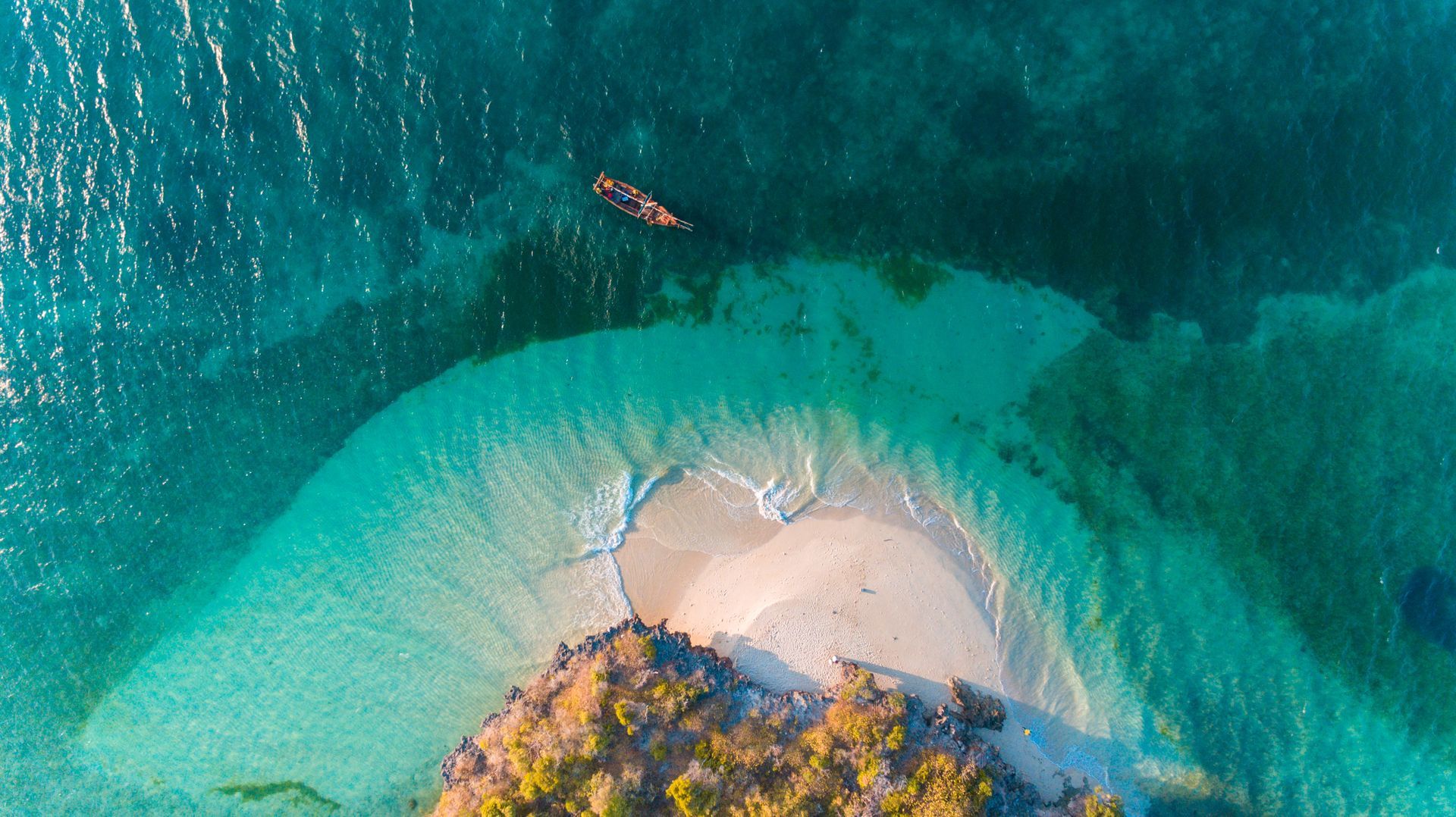
Zanzibar
Paradise found! This Tanzanian island gem offers a captivating blend of history, relaxation, and cultural immersion. Stone Town, a UNESCO World Heritage Site, is Zanzibar's heart where you can wander narrow streets lined with colourful Swahili houses and soak in the unique blend of African, Arabic, European, and Indian influences. Beyond the historic charm, pristine beaches with turquoise waters await. Relax on the shore, explore coral reefs teeming with marine life, or try watersports like kitesurfing. For a taste of history, explore the ruins of Gedi, an ancient Swahili settlement. Zanzibar offers something for everyone - whether you crave relaxation under the sun, historical exploration, or vibrant cultural experiences.
Musts: Take a guided tour through historic Stonetown, visit the birthplace of Queen superstar Freddie Mercury, relax on sun kissed beaches, snorkel and dive on pristine reefs
Zanzibar
Paradise found! This Tanzanian island gem offers a captivating blend of history, relaxation, and cultural immersion. Stone Town, a UNESCO World Heritage Site, is Zanzibar's heart where you can wander narrow streets lined with colourful Swahili houses and soak in the unique blend of African, Arabic, European, and Indian influences. Beyond the historic charm, pristine beaches with turquoise waters await. Relax on the shore, explore coral reefs teeming with marine life, or try watersports like kitesurfing. For a taste of history, explore the ruins of Gedi, an ancient Swahili settlement. Zanzibar offers something for everyone - whether you crave relaxation under the sun, historical exploration, or vibrant cultural experiences.
Musts: Take a guided tour through historic Stonetown, visit the birthplace of Queen superstar Freddie Mercury, relax on sun kissed beaches, snorkel and dive on pristine reefs

Ruaha National Park
Nicknamed Tanzania's "best kept secret," Ruaha offers a vast wilderness experience. Located in the central region of Tanzania, this is where sprawling savannas dotted with baobab trees offer a stark contrast to the dramatic gorges and swirling rapids of the Great Ruaha River. Here you can spot lions, leopards, and elephants roaming freely, or witness endangered painted wolves (African wild dogs) on the hunt. Over 570 bird species have been recorded here, making Ruaha a paradise for birdwatchers. It's far flung, remote and wonderfully wild, with the added luxury that with only a handful of wonderful lodges and camps, it feels marvellously exclusive!
Musts: Walking safaris; birding along the Great Ruaha River; picnics on the plains; game drives, bush dinners under the stars
Ruaha National Park
Nicknamed Tanzania's "best kept secret," Ruaha offers a vast wilderness experience. Located in the central region of Tanzania, this is where sprawling savannas dotted with baobab trees offer a stark contrast to the dramatic gorges and swirling rapids of the Great Ruaha River. Here you can spot lions, leopards, and elephants roaming freely, or witness endangered painted wolves (African wild dogs) on the hunt. Over 570 bird species have been recorded here, making Ruaha a paradise for birdwatchers. It's far flung, remote and wonderfully wild, with the added luxury that with only a handful of wonderful lodges and camps, it feels marvellously exclusive!
Musts: Walking safaris; birding along the Great Ruaha River; picnics on the plains; game drives, bush dinners under the stars
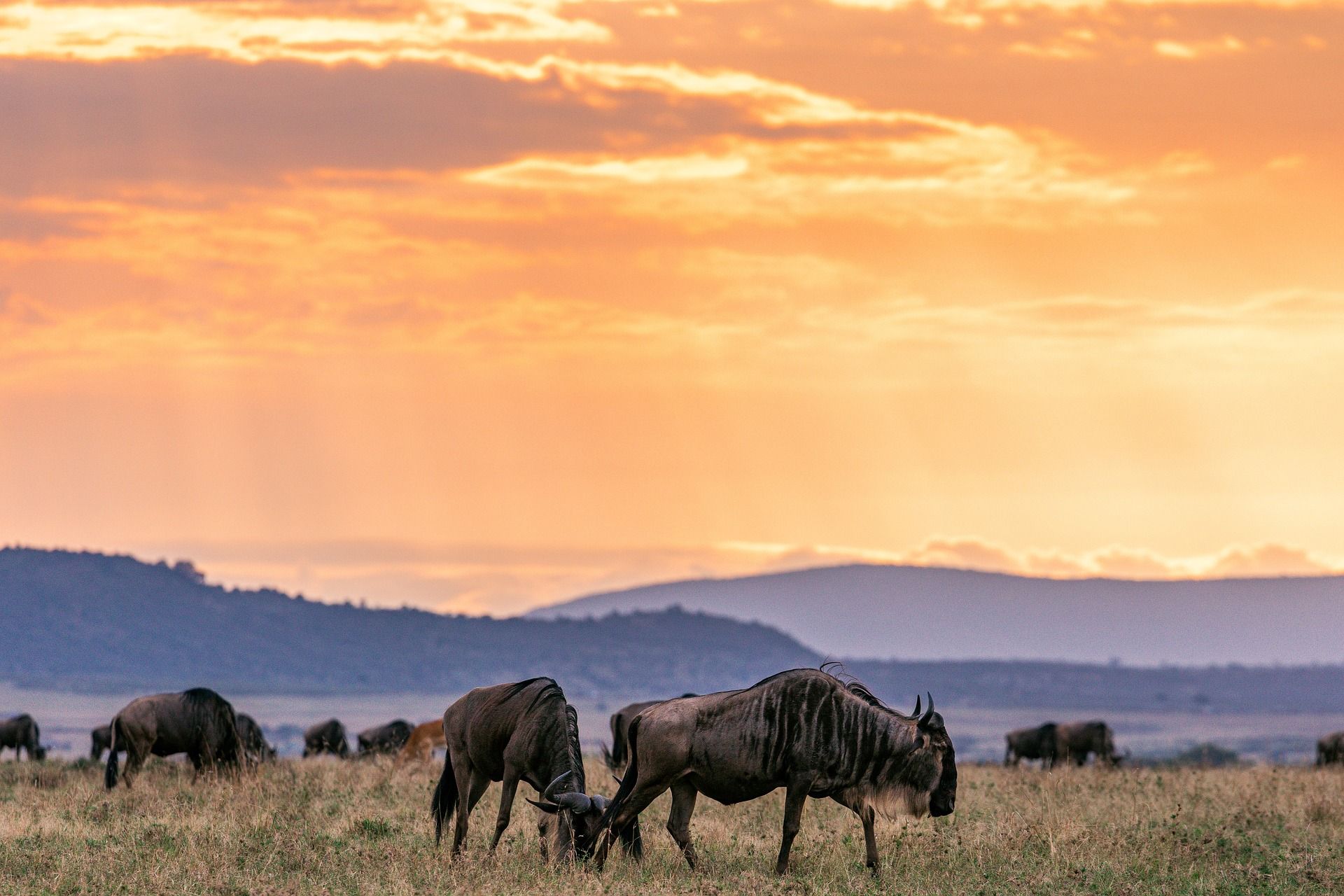
The when...
Worried about the weather? Or getting the best out of those pesky wildebeesties? Here's a rundown of the best times to visit Tanzania so you don't miss out on a single thing!
-
Summer
When: December to March
What to expect: Summertime in Tanzania with hot, sun-filled says, warm nights and minimal rain.
Why visit: Summer is sensuously warm and dry and a great time to visit if you want exceptional game viewing experiences. The coast has its own micro climate which is at its best during this period. Remember that temperatures can vary depending where you are. The migration is in the eastern and southern Serengeti during this period, with calfing talking place generally in February.
-
Long rains
When: April to June
What to expect: Very warm to hot days, warm evenings and spectacular thunderstorms with often torrential downpours.
Why visit: This is the time when many animals have their babies, making the most of the rains and the good grazing and browsing. The birdlife is amazing too. The temperatures are deliciously cool and sunny days interrupted with cloud cover building up to rainfall. It's a quiet season for tourism, meaning it's a great time to visit if you want to get away from the crowds! The wildebeest and their babies are on the move heading north along the western corridor at this time of year.
-
Winter
When: July to October
What to expect: Cooler mornings and nights, warm, sunny days.
Why visit: Winter in Tanzania is also the dry season which makes it traditionally the best time for game viewing. It's during this time that the Great Wildebeest Migration reaches the northern Serengeti, making for spectacular river crossings and predators aplenty. This is the coldest time of the year away from the coast. So bring lots of layers of warm clothing for early morning and late afternoon game drives.
-
Short rains
When: November to mid December
What to expect: Warm to hot days with thunderstorms and heavy downpours.
Why visit: It's the end of the dry season so the landscapes transform dramatically, with fresh grasses growing, trees flowering and life in abundance emerging. The short rains are a prelude to summer and Tanzania's time of plenty. It's a wonderful time to travel as it's still low season with fewer tourists. The coast is exceptional at this time of year. The wildebeest are moving south once more, using the eastern corridor to arrive in the south as the rains arrive.

ABOUT US
For Sian Bester and Cara Lloyd, Zafaris is the result of years spent working at the coalface of the safari industry, learning their trade and perfecting it.
Zafaris isn't a regular travel company thanks to the fact that Sian and Cara don't just know their safari onions, they can also prepare and dish those onions up in a delectable and irresistible manner! Both have worked in lodges and have experience in the "how" of the art of safari at a practical level. They've also done their time working in large, corporate operators, sweating over the minutiae of countless itineraries.
Zafaris is the culmination of this experience - a boutique safari operator that's all about personal, professional service, expert recommendations and first-hand experience of the very best that Africa has to offer...
Zafaris is represented on
SafariBookings.
The when...
Worried about the weather? Or getting the best out of those pesky wildebeesties? Here's a rundown of the best times to visit Tanzania so you don't miss out on a single thing!
-
Summer
When: December to March
What to expect: Summertime in Tanzania with hot, sun-filled says, warm nights and minimal rain.
Why visit: Summer is sensuously warm and dry and a great time to visit if you want exceptional game viewing experiences. The coast has its own micro climate which is at its best during this period. Remember that temperatures can vary depending where you are. The migration is in the eastern and southern Serengeti during this period, with calfing talking place generally in February.
-
Long rains
When: April to June
What to expect: Very warm to hot days, warm evenings and spectacular thunderstorms with often torrential downpours.
Why visit: This is the time when many animals have their babies, making the most of the rains and the good grazing and browsing. The birdlife is amazing too. The temperatures are deliciously cool and sunny days interrupted with cloud cover building up to rainfall. It's a quiet season for tourism, meaning it's a great time to visit if you want to get away from the crowds! The wildebeest and their babies are on the move heading north along the western corridor at this time of year.
-
Winter
When: July to October
What to expect: Cooler mornings and nights, warm, sunny days.
Why visit: Winter in Tanzania is also the dry season which makes it traditionally the best time for game viewing. It's during this time that the Great Wildebeest Migration reaches the northern Serengeti, making for spectacular river crossings and predators aplenty. This is the coldest time of the year away from the coast. So bring lots of layers of warm clothing for early morning and late afternoon game drives.
-
Short rains
When: November to mid December
What to expect: Warm to hot days with thunderstorms and heavy downpours.
Why visit: It's the end of the dry season so the landscapes transform dramatically, with fresh grasses growing, trees flowering and life in abundance emerging. The short rains are a prelude to summer and Tanzania's time of plenty. It's a wonderful time to travel as it's still low season with fewer tourists. The coast is exceptional at this time of year. The wildebeest are moving south once more, using the eastern corridor to arrive in the south as the rains arrive.
CONTACT US
Contact Us
We will get back to you as soon as possible.
Please try again later.
Contact Us
We will get back to you as soon as possible.
Please try again later.
CONTACT US
Contact Us
We will get back to you as soon as possible.
Please try again later.
Contact Us
We will get back to you as soon as possible.
Please try again later.
CONTACT US
Contact Us
We will get back to you as soon as possible.
Please try again later.
All Rights Reserved | Elgin Travel (Pty) Ltd, t/a Wildr.Africa
Designed & powered by: The Safari Collective
Designed & powered by: The Safari Collective
All Rights Reserved | Elgin Travel (Pty) Ltd, t/a Wildr.Africa
All Rights Reserved | Elgin Travel (Pty) Ltd, t/a Wildr.Africa
Designed & powered by:

